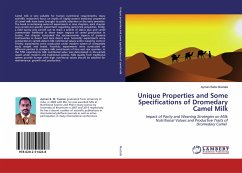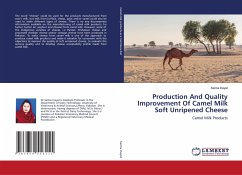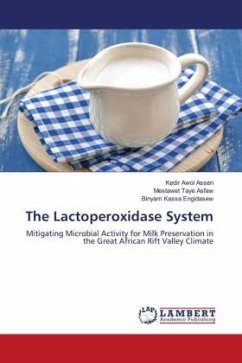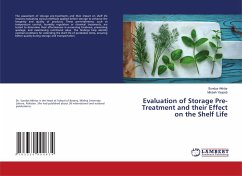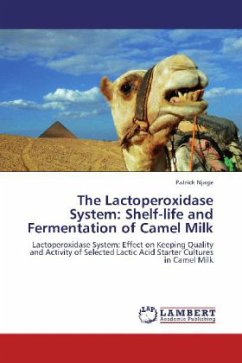
The Lactoperoxidase System: Shelf-life and Fermentation of Camel Milk
Lactoperoxidase System: Effect on Keeping Quality and Activity of Selected Lactic Acid Starter Cultures in Camel Milk
Versandkostenfrei!
Versandfertig in 6-10 Tagen
32,99 €
inkl. MwSt.

PAYBACK Punkte
16 °P sammeln!
The combination of poor hygienic standards, high ambient temperatures and lack of refrigeration facilities render camel milk very much susceptible to spoilage. Bovine LP-system has been shown to inhibit many bacterial species and its use for temporary preservation of raw bovine milk widely documented. However, use of the LP-system to preserve raw camel milk and to manufacture products from such preserved milk has not been explored. Practical considerations when using the LP-system for camel milk preservation have been outlined here. These include the duration of LP-system mediated antibacteria...
The combination of poor hygienic standards, high ambient temperatures and lack of refrigeration facilities render camel milk very much susceptible to spoilage. Bovine LP-system has been shown to inhibit many bacterial species and its use for temporary preservation of raw bovine milk widely documented. However, use of the LP-system to preserve raw camel milk and to manufacture products from such preserved milk has not been explored. Practical considerations when using the LP-system for camel milk preservation have been outlined here. These include the duration of LP-system mediated antibacterial effect in camel milk and effect of storage temperature on this extension in shelf-life. The book highlights the benefits of increasing concentrations of sodium thiocyanate and hydrogen peroxide within physiological limits on the keeping quality. The potential of shelf-life extension of camel milk by using a combination of LP-system and pasteurization as preservative hurdles is outlined. Finally, the effect of the LP-system on lactic acid bacteria starter culture activity in heat treated and raw camel milk together with possible measures to reduce this inhibition are explored and discussed.






